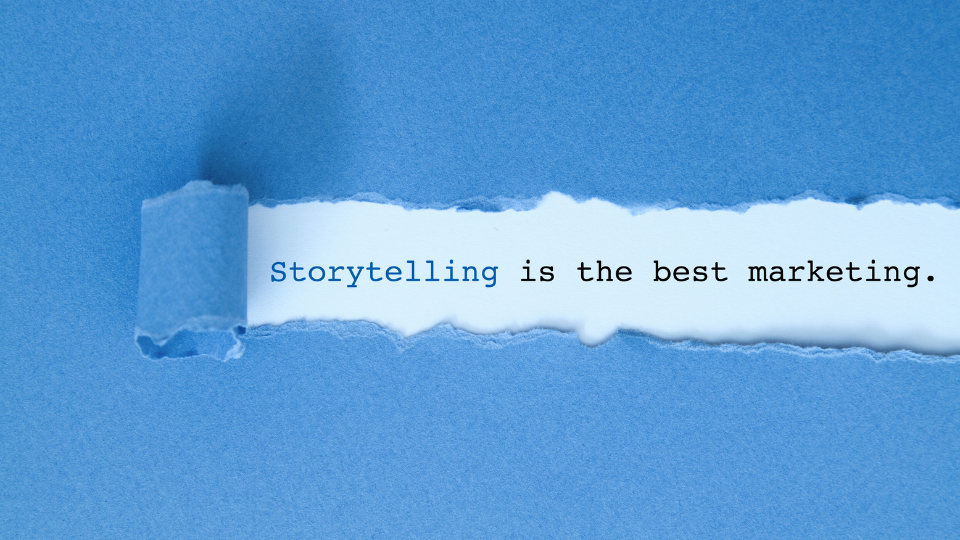
Nowadays, in a digital world overflowing with ads, algorithms, and attention-grabbing tactics, the brands that stand out aren’t always the ones shouting the loudest, they’re the ones telling the most human stories.
That’s the heart of the art of storytelling in marketing. It’s not about bombarding your audience with product features or sales pitches. It’s about crafting narratives that resonate, spark emotion, and build a relationship. When your story aligns with your audience’s values and aspirations, you’re not just selling, you’re connecting.
Why Storytelling Is the Secret to Brand Loyalty
Humans are wired to respond to stories. Neuroscience tells us that well-crafted narratives trigger oxytocin, the “trust hormone,” creating a sense of empathy and connection. In business, this means people are far more likely to engage with and remember a brand when they connect with its story.
Consider Nike’s campaigns. They rarely lead with product specs. Instead, they tell stories of perseverance, grit, and triumph allowing customers to see themselves as the hero, with Nike as the trusted guide. That emotional connection is what transforms a one-time buyer into a loyal advocate.
The Core Elements of the Art of Storytelling in Marketing
1. Your Brand’s Origin Story
Every great story starts with a “why.” Why you began. Why you care. Why you do things differently. Sharing your brand’s origin makes you relatable and human two things audiences crave in a marketplace full of faceless corporations.
Ask yourself:
- What challenge or gap did you set out to solve?
- What values guide your business?
- How has your journey shaped the solutions you offer today?
2. Relatable Characters
Characters are the lens through which your audience experiences your story. In marketing, your characters can be:
- Customers who have transformed because of your product or service.
- Your team and the passion that drives their work.
- Your audience’s aspirational self the version of them they want to become.
Example: A small bakery might highlight the story of a young couple ordering a custom cake for their anniversary, weaving in themes of love, tradition, and community.
3. Conflict and Resolution
Conflict creates tension, which keeps people engaged. In marketing, the conflict is your audience’s challenge. The resolution is how you help them overcome it.
This mirrors the structure of the Inbound Marketing Funnel a strategy we’ve covered in detail in our blog The Inbound Marketing Funnel Explained: How to Attract, Engage, and Convert More Leads. In both cases, the story begins by acknowledging the problem, guides the audience toward understanding the solution, and ends with a satisfying transformation.
How to Apply the Art of Storytelling in Marketing Across Channels
Social Media
Use short-form narratives to make quick, emotional connections. A single photo paired with a heartfelt caption can make your brand memorable in just a few seconds. Start with a hook, add context, and finish with an emotional or inspiring takeaway.
Email Marketing
Treat emails like a personal conversation. Open with an anecdote, move into the lesson or benefit, and then connect the dots to your service or offer. This format builds anticipation and trust over time.
Campaigns and Ads
Think in three acts:
- Setup: Introduce the situation or problem.
- Confrontation: Show the stakes and why it matters.
- Resolution: Present your brand as the bridge to the desired outcome.
Emotional Hooks That Make Stories Stick
Your story should make people feel something. Here are the most powerful emotions to tap into:
- Inspiration: Show what’s possible.
- Empathy: Show you understand their struggle.
- Excitement: Show the thrill of change or opportunity.
- Belonging: Show they’re part of something bigger.
When people feel, they remember. And when they remember, they act.
Advanced Storytelling Frameworks for Marketing
To make your stories even more impactful, consider using proven narrative structures:
- The Hero’s Journey: A character faces a challenge, receives guidance, overcomes obstacles, and transforms. Your customer is the hero, and your brand is the guide.
- Before-After-Bridge: Show the audience what life was like before your solution, what it could be after, and then bridge the gap with your product or service.
- Problem-Agitate-Solve: Present the problem, amplify the pain of leaving it unresolved, and offer your brand as the answer.
Example: Airbnb often uses the Before-After-Bridge method showing how travel used to be impersonal, then highlighting the unique, memorable experiences guests can have through their platform.
Measuring Storytelling Success
Storytelling isn’t just a creative exercise, it’s a measurable strategy. Track:
- Engagement rates on social and email campaigns.
- Time spent on story-driven web pages.
- Conversion rates from storytelling-focused ads.
- Brand sentiment in comments, reviews, and direct feedback.
This ensures your stories are not only compelling but also effective in driving results.

From Selling to Connecting
At its core, the art of storytelling in marketing is about transformation not just for your business, but for your audience. It’s about bridging the gap between where they are now and where they want to be, and showing how your brand helps them get there.
When you master storytelling, you don’t just market, you inspire. You connect. And you convert.
Ready to make your brand unforgettable? Let’s craft a story that inspires, connects, and converts your audience into loyal advocates.
Book your appointment with us today and start telling the story your audience has been waiting to hear.







